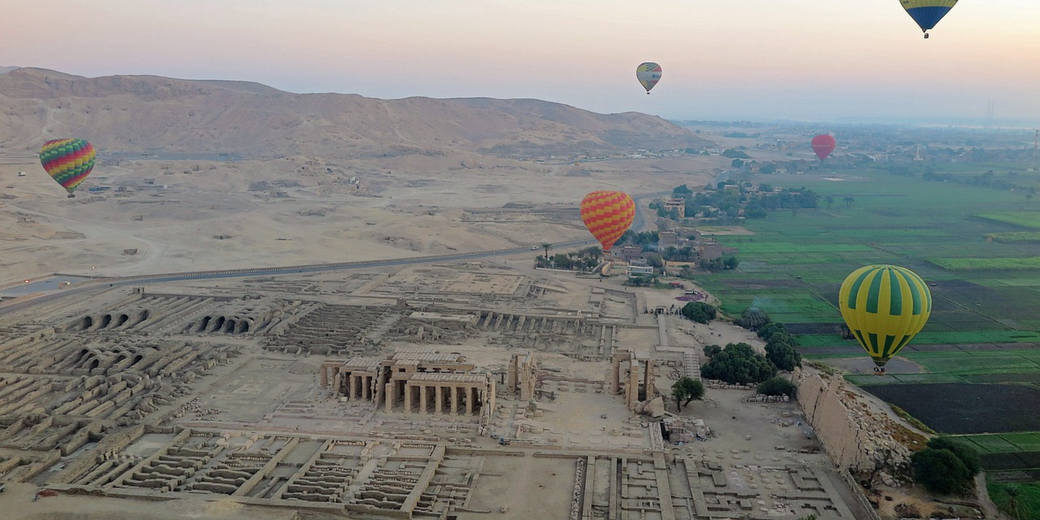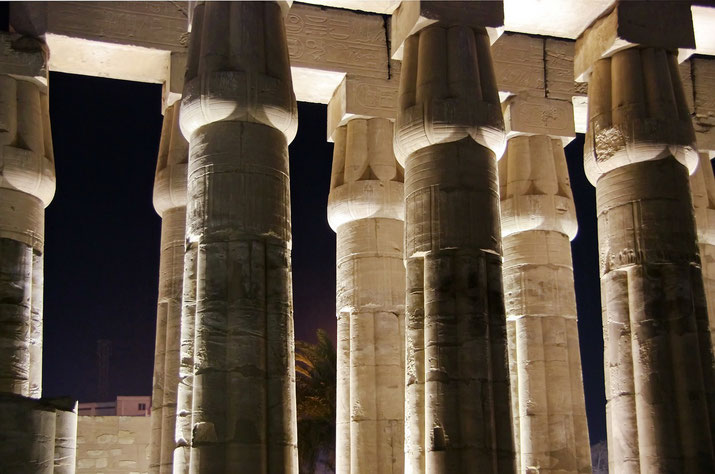The colossal Ramesseum: the magnificent temple built to glorify Egypt's greatest pharaoh

The west bank of the Nile at Thebes holds some of the grandest ruins of ancient Egypt, but among them, one structure stood out for its mind-boggling scale and detailed decorations.
The Ramesseum, a mortuary temple constructed during the 13th century BCE, was commissioned by Ramesses II, who ruled Egypt from circa 1279 to 1213 BCE and whose reign became one of the most productive building periods in pharaonic history.
The temple was intended as both a house of worship and a monument to his divine status, military achievements, and enduring authority.
Monumental Imagery and Military Glory
This arrangement affirmed his claim to divine kingship throughout the entire complex.
The Ramesseum originally measured around 300 feet in length and was oriented toward the Nile.
It functioned as part of the Theban funerary tradition, where pharaohs built temples to ensure their spiritual presence remained active long after death.
Ramesses II, who styled himself as a living god, wanted a monument that projected his reputation far into the future.
The temple complex included pylons, courtyards, pillared halls, storage chambers, and cult sanctuaries dedicated to the god Amun-Ra, as well as to Ra-Horakhty, Ptah, Osiris, and the king himself.
The first pylon alone measured 60 metres wide, and beyond it lay the vast courtyard where priests and offerings passed before towering statues of the king.
On entering the temple, visitors in antiquity would have seen the famous seated colossus of Ramesses II.
This limestone statue, originally weighing over 1,000 tonnes and standing around 20 metres high, lay toppled by an earthquake in later centuries, its broken torso inspiring Percy Bysshe Shelley's poem Ozymandias, published in 1818.
Shelley never saw the statue in person but based his sonnet on accounts brought back by European travellers.
It was one of many colossal images carved to present the king as a godlike figure, wielding supreme control.
Reliefs along the pylons and inner walls illustrate scenes from the Battle of Kadesh against the Hittites.
In one prominent depiction, Ramesses charges alone into enemy lines, bow drawn, trampling his foes beneath the hooves of his horses.
These scenes portray him as a fearless warrior leading his chariot into battle and receiving praise from Amun, reinforcing his reputation as both a military hero and a chosen vessel of divine will.
Divine Titles and Persuasive Inscriptions
Inscriptions inside the hypostyle halls praised the king in formalised, poetic language.
They described his might over foreign lands through just laws and devout religious duties.
The texts named him “The Strong Bull who Protects Egypt” and “He who makes monuments for his father Amun.”
These phrases, carved repeatedly in hieroglyphs, created an overwhelming sense of reverence within the space.
The architectural layout copy traditional religious design, but the size and repetition of Ramesses’ images exaggerated his importance.
Even the lesser rooms and passageways bore his names and titles, affirming his claim to divine kingship throughout the entire complex.
The Ramesseum displayed an exceptional volume of royal propaganda inscribed onto its walls, exceeding that of many structures of the time.
While Karnak and Luxor were grander in scale and scope, the Ramesseum's inscriptions placed greater emphasis on glorifying Ramesses II personally.
To maintain the Ramesseum’s daily rituals and economic needs, the complex operated as a working estate.
It was supported by surrounding landholdings, livestock, and hundreds of workers who worked as priests, scribes, and labourers.
Recent studies estimate that several hundred individuals may have worked there at any given time, organised into administrative structures and levels of authority.
The temple's granaries and storage chambers ensured it could perform offerings and ceremonies for decades.
Ostraca and papyri discovered nearby confirm the presence of scribal activity, cult rituals, and temple administration during the later Ramesside and Third Intermediate Periods.
These records show how the Ramesseum remained an active religious site even after the decline of the New Kingdom.
Rediscovery and Archaeological Investigation
Over time, as political power shifted away from Thebes, the Ramesseum fell into disuse and ruin.
Earthquakes, floods, and the stripping of stone for later constructions gradually reduced its structure to scattered columns and crumbling walls.
By the time European travellers arrived in the 18th and 19th centuries, the temple had already become a picturesque ruin.
Scholars such as Jean-François Champollion and Richard Lepsius recorded the hieroglyphs and architectural features, and they identified the site as the “Memnonium” before they linked it to Ramesses II.
The temple’s limestone colossi and sandstone walls, some of which had been transported from quarries at Gebel el-Silsila, provided further evidence of royal support.
Modern excavations, which include recent work by the French-Egyptian archaeological mission, have since clarified its original function and historical significance.

Despite the damage it had suffered, the Ramesseum still offers valuable insight into the religious, political, and artistic priorities of New Kingdom Egypt.
Its design follows the established principles of large-scale temple building, but the scale of its statuary, the extent of inscriptions praising himself, and the prominence of military scenes highlight the intentions of a ruler who aimed to dominate both heaven and earth.
Ramesses II used the temple to show his power and secure his memory in stone.
The result was a structure that clearly showed who he was in every chamber and inscribed his name across the terrain of ancient Thebes.
It became, both physically and in its ideas, one of the most powerful expressions of divine rule in the ancient world.
What do you need help with?
Download ready-to-use digital learning resources
Copyright © History Skills 2014-2025.
Contact via email
With the exception of links to external sites, some historical sources and extracts from specific publications, all content on this website is copyrighted by History Skills. This content may not be copied, republished or redistributed without written permission from the website creator. Please use the Contact page to obtain relevant permission.





